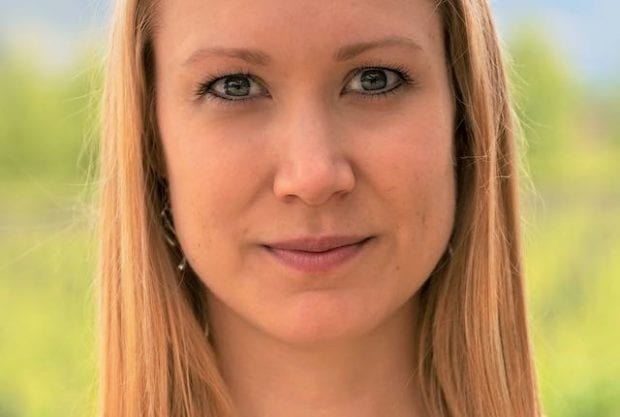HOUSTON – (Feb. 19, 2020) – If you’re wondering where that molecule went, Anna-Karin Gustavsson may be able to help.
Single-molecule tracking and super-resolution imaging are specialties of the soon-to-be Rice University faculty member joining as a CPRIT Scholar, her recruitment funded by the Cancer Prevention and Research Institute of Texas.
The tax-funded state agency announced a $2 million grant to bring the researcher to Houston from Stanford University, where she has worked as a postdoctoral fellow in the group of Nobel laureate W.E. Moerner since 2015. She was, in fact, the first postdoc hired by Moerner since winning the prize the year before.
“I’ve loved my time here in the lab and W.E.’s been a great mentor, but I’m very excited to be starting up my own research,” said Gustavsson, who will join Rice in August.
Gustavsson studies the nanoscale structures and dynamics of single molecules inside cells and the molecular mechanisms that drive them, and designs and builds versatile imaging tools in the rapidly developing field of 3D single-molecule super-resolution microscopy.
These will incorporate a breakthrough technique called light sheet illumination, the topic of a 2018 Nature Communications paper on which Gustavsson was first author. The method allows researchers to illuminate a thin slice of a live cell to see the molecules it contains. She received a National Institutes of Health Pathway to Independence Award in 2019 to refine the technique.
“What I’m trying to do is to push single-molecule imaging to 3D, and to do it throughout entire mammalian cells,” she said. “Compared to many other targets for single-molecule super-resolution imaging, mammalian cells are very big, and we conventionally get a lot of fluorescence background haze in our images.
“That's detrimental for precisely detecting single molecules,” she said. “They're so dim on their own, we need as good a contrast as we can possibly get. By only illuminating a thin plane, we optically section the cell. That reduces the fluorescence background and also reduces the risk of photobleaching what we haven’t imaged yet, and of damaging the cells with the light.
“This technique is much gentler for live cell imaging,” Gustavsson said.
The ability to combine slices to see a cell’s complete structure in great detail will be a boon for cancer research, she said. One goal of her work at Rice will be to obtain full super-resolution reconstructions of living cancer cells before, during and after treatment with drugs.
“Since I can see individual molecules, I can look at two different proteins and see how they interact in a healthy cell and whether those interactions are lost during disease progression,” Gustavsson said. “Understanding the underlying molecular mechanisms could lead to potential targets for drug treatment to restore those interactions.”
Gustavsson, who will be the Norman Hackerman-Welch Young Investigator Chair at Rice, earned her bachelor’s and master’s degrees and a Ph.D. in physics from the University of Gothenburg, Sweden.
She said the collaborative nature of Rice faculty and juxtaposition to new colleagues at the Texas Medical Center were primary considerations in coming to Houston. Gustavsson’s Rice lab will be at the university’s recently renovated Space Science and Technology Building.
The grant to Gustavsson was one of 55 awards announced by CPRIT on Feb. 19, with a total value of more than $78 million. To date, CPRIT has awarded $2.9 billion in grants to Texas research institutions and organizations through its academic research, prevention and product development research programs.

